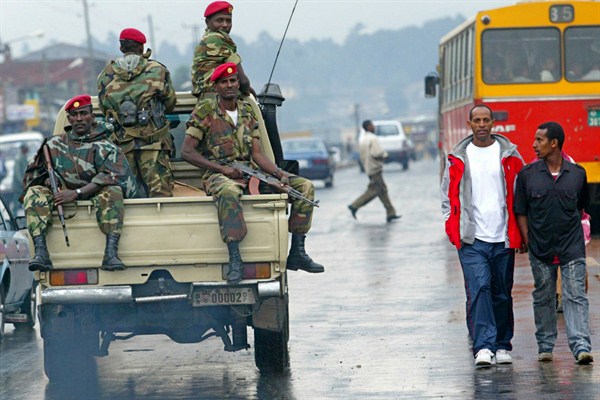ADDIS ABABA, Ethiopia—In Ethiopia’s two most populous ethnic regions, anti-government rallies turned into a bloodbath in early August as security forces again used live ammunition against protesters. In the western part of Oromia, the largest of Ethiopia’s nine ethnically based states, the town of Nekempte looked like a “war zone,” according to a protester. An opposition party said almost 100 people were killed and thousands arrested after demonstrations across the sprawling Oromia region, which encircles the capital, Addis Ababa, and borders Kenya in the south and South Sudan in the west. A day later in Bahir Dar, the capital of Amhara state, Amnesty International said police killed as many as 30 people. The government said a protest descended into a riot. Historic Gondar city to the north also saw more demonstrations, vandalism and repression.
The sustained discontent in Oromia, which began after unrest erupted last November, presents a major challenge to the country’s government, which came to power in 1991 when an insurgency led by the minority Tigrayan ethnic group overthrew a military regime. Having been granted autonomy in a federal system, the Oromo, who number around 35 million as Ethiopia’s largest ethnic group, are asserting their rights.
The Oromo’s demands have included the scrapping of a greater Addis Ababa strategic plan that threatened Oromo farmers; the introduction of Afaan Oromo as a federal government language; the release of political prisoners; an end to police brutality; and complaints about subservience to Tigrayans in the ruling coalition. Despite the January cancellation of the master plan, the protests continued. And now they have been compounded by vociferous opposition from the Amhara, the country’s second-largest ethnic group, who wielded significant power as rulers, administrators and landlords during Ethiopia’s imperial past.

